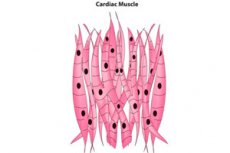Nye publikasjoner
Studie undersøker regenerering av hjerteceller i jakten på nye behandlinger
Sist anmeldt: 02.07.2025

Alt iLive-innhold blir gjennomgått med medisin eller faktisk kontrollert for å sikre så mye faktuell nøyaktighet som mulig.
Vi har strenge retningslinjer for innkjøp og kun kobling til anerkjente medieområder, akademiske forskningsinstitusjoner og, når det er mulig, medisinsk peer-evaluerte studier. Merk at tallene i parenteser ([1], [2], etc.) er klikkbare koblinger til disse studiene.
Hvis du føler at noe av innholdet vårt er unøyaktig, utdatert eller ellers tvilsomt, velg det og trykk Ctrl + Enter.

Når en pasient opplever hjertesvikt, en av de viktigste dødsårsakene på verdensbasis, begynner de å miste friske, fungerende hjerteceller. Hjertesvikt fører til at disse en gang så fleksible cellene blir til fiberholdige celler som ikke lenger er i stand til å trekke seg sammen og slappe av. Denne herdingen av hjertecellene svekker deres evne til å effektivt frakte blod til resten av kroppen. Fordi folk ikke kan regenerere disse hjertecellene, står pasienten overfor en lang vei til bedring som inkluderer forebyggende eller symptomatisk behandling.
Noen pattedyr er imidlertid i stand til å regenerere hjerteceller, selv om dette vanligvis skjer innen en viss tidsramme rett etter fødselen. Basert på dette fullførte Mahmood Salama Ahmed, PhD, og et internasjonalt forskerteam en studie for å identifisere nye terapeutiske midler eller eksisterende terapeutiske regimer som tidligere var godkjent av US Food and Drug Administration (FDA) for regenerering av hjerteceller.
Studien deres, «Identifisering av FDA-godkjente legemidler som induserer hjerteregenerering hos pattedyr», ble publisert i tidsskriftet Nature Cardiovascular Research.
«Denne studien er rettet mot regenerativ terapi, ikke symptomatisk behandling», la Ahmed til.
Ahmed, professor i farmasøytisk vitenskap ved Jerry H. Hodge School of Pharmacy ved Texas Tech University, jobbet med studien ved UT Southwestern Medical Center. Han sa at den nåværende forskningen bygger på funn fra en studie fra 2020 utført av laboratoriet til Hesham Sadek, MD, ved UT Southwestern Medical Center.
I den studien viste forskerne at mus faktisk kunne regenerere hjerteceller ved å genetisk slette to transkripsjonsfaktorer: Meis1 og Hoxb13. Bevæpnet med denne informasjonen startet Ahmed og medforfatterne sin siste studie i 2018 ved University of Texas Southwestern Medical Center. De begynte med å målrette transkripsjonsfaktorene (Meis1 og Hoxb13) ved hjelp av paromomycin og neomycin, to antibiotika fra aminoglykosidklassen.
«Vi utviklet hemmere for å slå av den interne transkripsjonen og gjenopprette den regenerative kapasiteten til hjerteceller», la Ahmed til.
Ahmed sa at strukturen til paromomycin og neomycin indikerte deres potensial til å binde seg til og hemme transkripsjonsfaktoren Meis1. For å forstå hvordan denne bindingen kunne oppstå, måtte teamet først avdekke de molekylære mekanismene til paromomycin og neomycin og lære hvordan de binder seg til Meis1- og Hoxb13-genene.
«Vi begynte å teste dette på mus som led av hjerteinfarkt eller iskemi», forklarte Ahmed. «Vi fant ut at begge legemidlene (paromomycin og neomycin) virket synergistisk for å øke ejeksjonsfraksjonen (prosentandelen blod som forlater hjertet ved hver sammentrekning), slik at kontraktiliteten til ventriklene (hjertekamrene) ble betydelig forbedret. Dette økte hjertets minuttvolum og reduserte det fibrøse arret som dannet seg i hjertet.»
Teamet samarbeidet med forskere ved University of Alabama i Birmingham for å administrere paromomycin og neomycin til griser som led av hjerteinfarkt. De fant at griser som led av hjerteinfarkt hadde bedre kontraktilitet, ejeksjonsfraksjon og generell forbedring i hjerteminuttvolum når de fikk paromomycin og neomycin.
I fremtidig forskning er Ahmed interessert i å kombinere bindingsprofilene til paromomycin og neomycin til ett molekyl i stedet for to. Hvis det lykkes, sa han, kan det nye molekylet unngå uønskede eller potensielt uønskede effekter forbundet med antibiotikaresistens.
«Vi ønsker å lage nye syntetiske små molekyler som retter seg mot Meis1 og Hoxb13», sa Ahmed. «Vi ønsker å fortsette studien på griser for toksikologiske studier. Og forhåpentligvis vil dette være en innledning til kliniske studier på mennesker.»
«Den gode nyheten er at vi bruker flere FDA-godkjente legemidler med etablerte sikkerhetsprofiler og velkjente bivirkninger, slik at vi kan omgå noen av trinnene for å få godkjenning for å studere et nytt legemiddel. Det er det fine med legemiddelgjenbruk: Vi kan komme oss til klinikken tidligere for å begynne å redde liv.»
